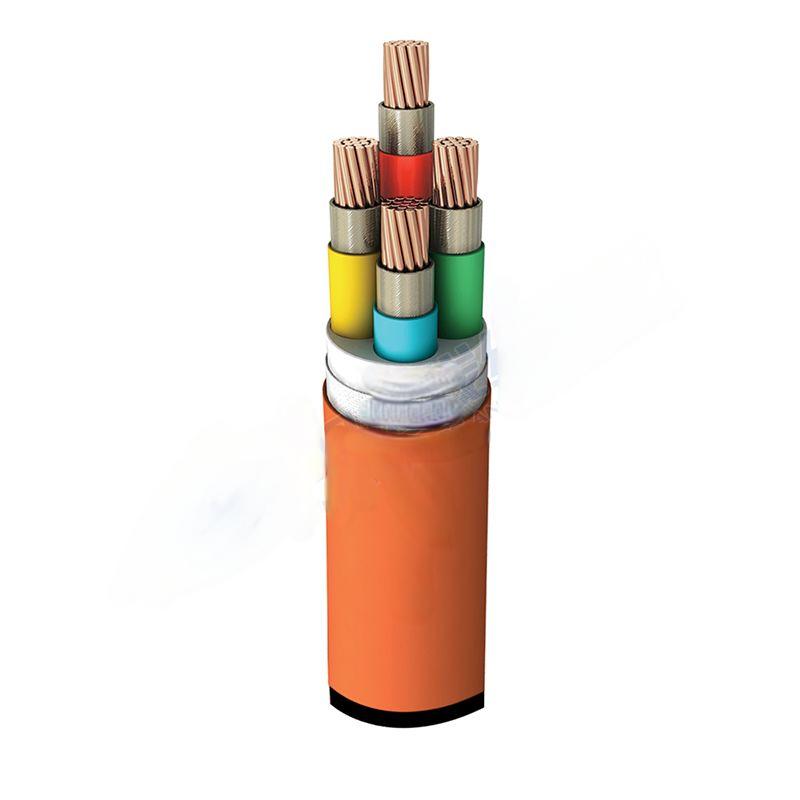nóv . 19, 2024 09:43 Back to list
gate valve nrs
Understanding Gate Valves A Focus on NRS
Gate valves, commonly used in various industrial applications, play a crucial role in regulating the flow of liquids and gases. Among the different types of gate valves, the Non-Rising Stem (NRS) gate valve is particularly noteworthy due to its unique design and functionality.
What is a Gate Valve?
A gate valve is a type of valve that opens by lifting a rectangular or circular gate out of the path of the fluid. This design allows for minimal pressure drop when the valve is fully open, making gate valves ideal for on/off control in pipelines. They are typically installed in applications requiring full flow capacity and negligible resistance.
Features of NRS Gate Valves
The Non-Rising Stem gate valve differs from the traditional rising stem gate valve in that its stem does not move upward as the valve opens. Instead, the stem is threaded into the gate, and the opening and closing of the valve occur without vertical movement of the stem above the valve body. This feature is particularly advantageous in applications where vertical space is limited or in underground installations.
Some key features of NRS gate valves include
1. Compact Design The non-rising stem design allows NRS gate valves to be installed in confined spaces, making them suitable for locations where height is a constraint.
2. Durability NRS gate valves are constructed from various materials, including cast iron, ductile iron, and stainless steel, providing robust durability and a long service life under harsh conditions.
3. Maintenance Unlike rising stem valves, which require additional clearance for the stem to operate, NRS gate valves can be easier to maintain in tight spaces. Regular maintenance involves checking the valve for leaks and ensuring the stem and seat are in good condition.
gate valve nrs

4. Versatile Applications NRS gate valves are widely used in waterworks, sewage treatment plants, irrigation systems, and industrial applications. Their design allows them to handle high-pressure environments and to be effective in managing the flow rate of various fluids.
Operating Mechanism
The operation of an NRS gate valve is straightforward. When the valve is opened, the handwheel or actuator turns the stem, which either lifts or lowers the gate. In the fully open position, the gate is entirely out of the flow path, which minimizes turbulence and pressure loss. Conversely, when the valve is closed, the gate securely blocks the pipe, stopping the flow.
The efficiency of NRS gate valves makes them a preferred choice in many settings. However, it is essential to ensure that they are not used for throttling purposes, as partially open gate valves can lead to erosion, vibrations, and eventual failure of the valve.
Advantages and Disadvantages
Advantages - The NRS gate valve's compact design is beneficial for space-limited installations. - It allows for full flow when opened, which is advantageous for systems requiring large volumes of fluids. - They are robust and can withstand significant pressure, making them reliable for various applications.
Disadvantages - The inability to throttle flow makes NRS gate valves unsuitable for applications requiring flow adjustments. - If not maintained properly, the seats and gates can wear out, leading to leaks.
Conclusion
Understanding the functionality and advantages of Non-Rising Stem gate valves is crucial for engineers and professionals working in fluid handling systems. Their design provides a valuable solution for specific applications, particularly in limited spaces or high-pressure environments. As with any industrial component, proper maintenance and operational knowledge will ensure the longevity and reliability of NRS gate valves.
In summary, the NRS gate valve serves as an essential tool in managing fluid flow in various industries. Its unique features, coupled with the appropriate applications, make it a staple in modern engineering and fluid management systems. Whether in water supply, industrial processes, or municipal services, the contributions of NRS gate valves cannot be overstated.
Share
-
Reliable Wafer Type Butterfly Valves for Every IndustryNewsJul.25,2025
-
Reliable Flow Control Begins with the Right Ball Check ValveNewsJul.25,2025
-
Precision Flow Control Starts with Quality ValvesNewsJul.25,2025
-
Industrial Flow Control ReliabilityNewsJul.25,2025
-
Engineered for Efficiency Gate Valves That Power Industrial PerformanceNewsJul.25,2025
-
Empowering Infrastructure Through Quality ManufacturingNewsJul.25,2025